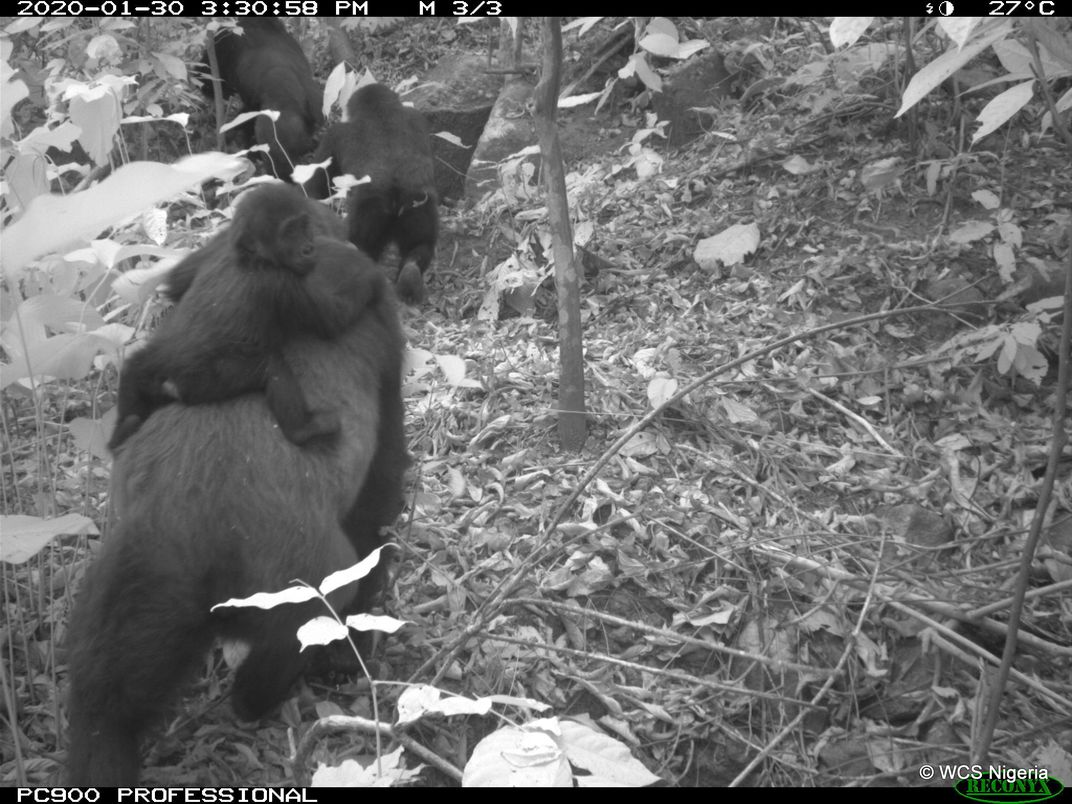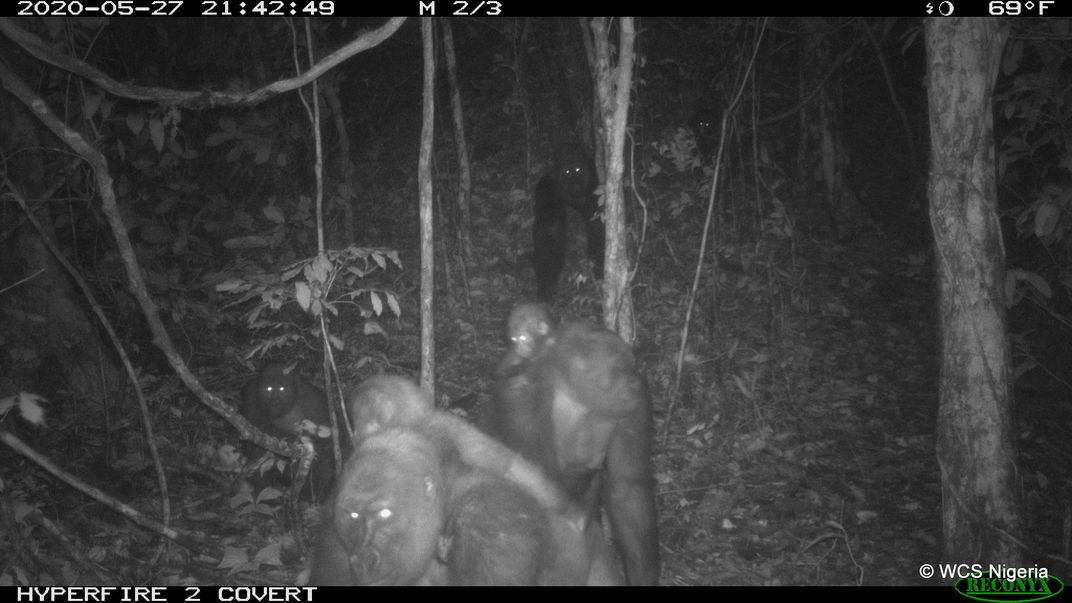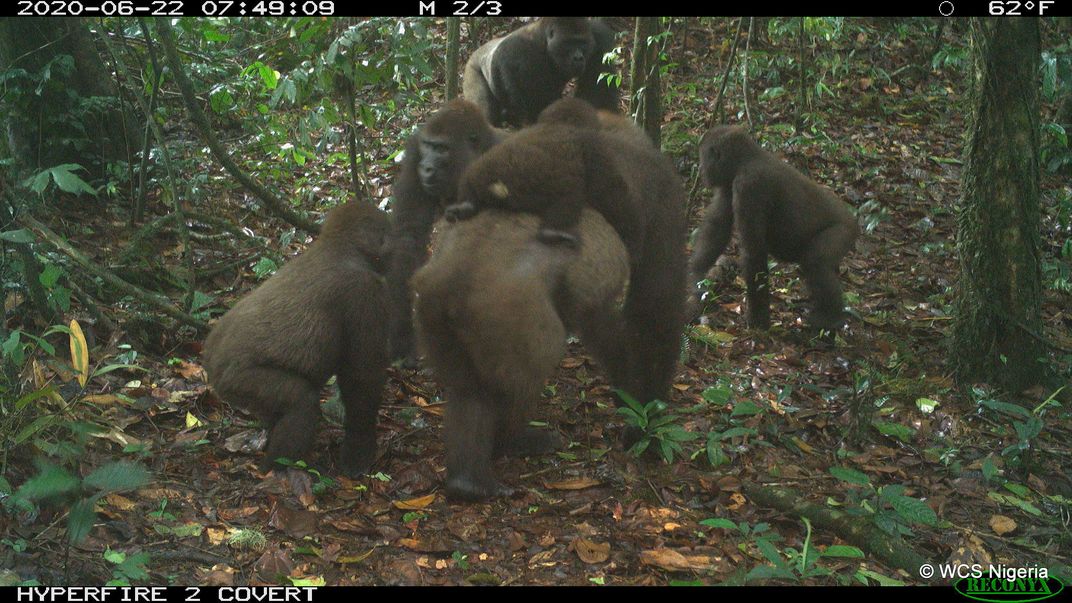Images Offer a Rare Glimpse of Cross River Gorillas With Their Babies
The photos show a group of the animals, which were once presumed extinct, with infants of varying ages—a promising sign for the subspecies
/https://tf-cmsv2-smithsonianmag-media.s3.amazonaws.com/filer/70/68/70688ab7-d039-4a09-90b0-145c37386e1a/rcnx0475.jpg)
Cross River gorillas are hard to find in the wild, in part because their population is so small. At one point, only 300 of the subspecies were known to be alive in the mountainous regions of Nigeria and Cameroon where the creatures live, according to the Wildlife Conservation Society (WCS).
However, camera trap images from May and June suggest that the gorillas are successfully reproducing, a sign that signals hope for the future of the subspecies, reports Carley Petesch for the Associated Press. Last week, the WCS released images taken in May and June of a group of the rare gorillas with multiple babies in tow. According to the statement, this is the first time that multiple infants of different ages have been recorded in the same group.
“It was great to see [...] evidence that these gorillas in these mountains are reproducing successfully because there have been so few images in the past,” John Oates, an anthropologist who led conservation efforts for the gorillas, tells the AP. “We know very little about what is going on with reproduction with this subspecies, so to see many young animals is a positive sign.”
The gorillas live in a rugged region along the border of Nigeria and Cameroon that spans about 4,600 square miles, according to Newsweek’s Andrew Whalen. The Mbe Mountains forest in southern Nigeria, where these images were captured, is home to about a third of the total population.
In 2012, researchers set up about 50 camera traps in the region to track the subspecies’ population growth, per the AP. Researchers have also used indirect methods to measure the Cross River gorilla population, such as counting their nests or searching for feeding trails.
NEWS: We've just released the first-known camera trap shots of Cross River gorillas with a group of babies. It's a promising sign for the world's rarest gorilla: https://t.co/Hms6bV7pBn @WCS_Nigeria pic.twitter.com/Q36zhK0rQr
— WCS (@TheWCS) July 8, 2020
These new images are some of the best since 2012, when the cameras caught footage of a a silverback male beating his chest and another gorilla that appeared to be missing a hand—perhaps as a result of human snares.
The subspecies was first discovered in 1904 and has been severely threatened by hunting and deforestation over the decades, per Newsweek. Cross River gorillas were presumed extinct in the 1970s, only to be “re-discovered” in the 1980s, per WCS.
Nine local communities and the WCS instituted a protection plan for the animals in the 1990s. No Cross River gorilla has been reported killed since 2012. “It’s a big success story that shows communities can protect their wildlife,” Andrew Dunn, the Nigeria director for WCS, tells the AP.
“It is extremely exciting to see so many young Cross River gorillas—an encouraging indication that these gorillas are now well protected and reproducing successfully, after previous decades of hunting,” says Inaoyom Imong, director of the Cross River Landscape for WCS, in a statement.
“While hunters in the region may no longer target gorillas, the threat of hunting remains, and we need to continue to improve the effectiveness of our protection efforts.”
/https://tf-cmsv2-smithsonianmag-media.s3.amazonaws.com/accounts/headshot/nora.png)




/https://tf-cmsv2-smithsonianmag-media.s3.amazonaws.com/accounts/headshot/nora.png)